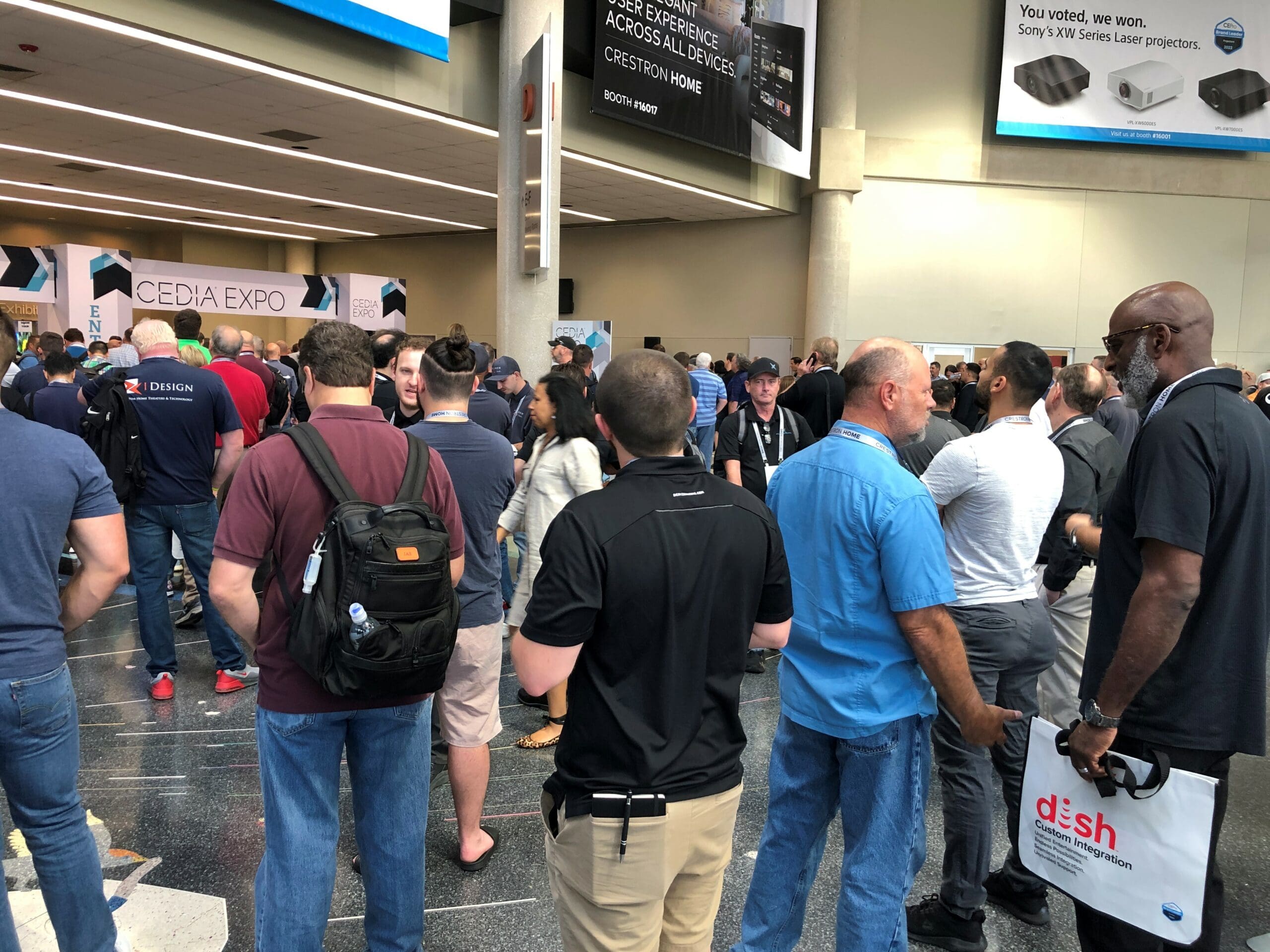As the world returns to a semblance of normalcy following the pandemic years, it is clear that our industry has been hit hard by a lack of product availability. Even now, as we begin to close out 2022, supply shortages still plague manufacturers and integrators. Integrators on both sides of the industry — residential and commercial — are scrambling to find solutions to meet client needs due to the lack of available products and the need for consistent, accurate and easily supported performance.
Integrators are finding they must be creative with the products available to them, regardless of the market in which that product is typically found. A quick glance through the exhibitor list from CEDIA Expo 2022 shows that many manufacturers offer products viable in both the residential and commercial markets.
So, what does all this mean for the future of our industry?
Blurred Lines
The scarcity of products due to chip shortages has resulted in many integrators seeking alternatives to their primary, or even secondary, preferences. This has led to product availability becoming a driving factor when weighing options to address project and client needs. Integrators are now seeking any product of similar performance, whether that product is usually deployed within the residential or the commercial market.
Since more manufacturers are creating products that can be viable in either market, there is a growing interest among both residential and commercial integrators to familiarize themselves with manufacturers on both sides of our industry.

The Innovation Hub stage on the CEDIA Expo show floor offered a platform for industry thought leaders to expound on the increasing convergence of the commercial and residential worlds.
Product availability isn’t the only reason for these blurred lines, however. Our industry has also seen a significant rise in demand for projects and applications that can be considered both commercial and residential; hence, the term “resimercial” was born.
In light of the growing popularity of resimercial projects — think restaurants, bars and small businesses — and the technology needs of those who work from home, commercial integrators are specifying residential products and residential integrators are specifying commercial products.
This raises an interesting question: Is there really that much difference between the worlds of residential and commercial manufacturers, at their core? Both sides of this industry serve many of the same users, focusing on applying technology to enhance their lives, provide convenience, enrich technology experiences and allow them to be more efficient. Both sides also offer the same foundational products — namely, audio/video distribution, amplifiers, speakers, displays, lighting, shades, etc.
The technology needs of those who work from home have grown significantly since the pandemic. Those who now work from home are used to commercial-grade technology. They need technology solutions to achieve the same commercial-type outcome, but in a residential environment. This shift in work style also means the technology within the office — which has become the new “offsite” — must be as easy to use as home technology is.
This shift has also brought about a change in how the industry views products. In the past, residential-focused products were often considered low budget, inferior or less reliable than commercial products were.
The latter, by contrast, were regarded as well built, fully featured and able to withstand more rigorous demands of high usage. We have now seen this gap narrowed, resulting in products that are interchangeable between markets as needs and applications warrant.
Where the Lines Overlap
Integrators who are not staying open-minded about new opportunities, products, clients and solutions might be doing themselves a disservice, while also disserving their clients. Although we’re seemingly on the other side of the pandemic, it has not only led to disruption in product availability and workforce deficiencies but also caused clients to rethink how they use their offices and meeting spaces. We do, in fact, see a growing trend to return to the office in some capacity.

On the CEDIA Expo Smart Stage, Jason Knott, CE Pro’s editor, presented awards for outstanding technology applications within the home environment.
However, workers are seeking justification to warrant them leaving the comfort of their remote-work arrangement. Forward-thinking organizations are pursuing integrated technology as a means of providing a more enticing, more productive workplace. This results in opportunities for integrators to offer solutions above and beyond the typical meeting space.
Common areas and collaborative environments should include some of the conveniences of home, while also presenting exciting possibilities for engagement that are unavailable in a work-from-home arrangement. These solutions will likely include a blend of commercial and residential technologies that are interactive and collaborative, and which offer convenience, flexibility and balance.
With the drive toward blending remote and office work, integrators may see a greater desire to integrate mobile and personal devices, as well as voice- and sensor-driven controls, along with an increased ability to engage with others in non-traditional meeting spaces.
At the same time, many people are recognizing the need to invest in permanent home offices. This will involve installing high-quality lighting, cameras and audio in order to move toward transforming a home office into a personal conferencing suite or broadcast studio.
Where We Go from Here
Residential and commercial integrators have a unique opportunity to learn from each other. Residential integrators understand the pitfalls and workarounds of the home; commercial integrators understand the technology standards of the office. So, where can integrators across these markets go to meet, learn and move forward, together?

Brittany DiCesare, client success manager, and Steve Greenblatt, president, both of Control Concepts Inc. Both recognize the increasing crossover between commercial and residential.
CEDIA Expo 2022 showcased manufacturers from both the residential and commercial markets. For commercial integrators, attendance at CEDIA Expo provided an opportunity to take in formal education, as well as to gain insight from the experiences of their residential counterparts.
This residential-focused trade show also provided an opportunity to make connections with manufacturers that are familiar with, as well as unfamiliar with, commercial integrators.
Now, with the announcement of Commercial Integrator Expo, co-located with CEDIA Expo 2023, this growing community should expect to see more education and learning opportunities. These will support both sides of our wonderful industry, as well as lay the groundwork for residential and commercial integrators to collaborate and partner to serve common clients.
If the recent past is any indicator, the AV industry will continue to evolve. Those who are successful will be at the forefront of change, adopting innovative ideas and pursuing creative opportunities to serve clients in new ways.
While there will be some who continue to build walls and create separation between projects and clients that are deemed “commercial” or “residential,” those who are open-minded and welcoming to their counterparts will likely find themselves better positioned to succeed.
All in all, it’s time we embrace this new, blended market that brings hope, support and opportunity for a bright future for our industry as a whole.










